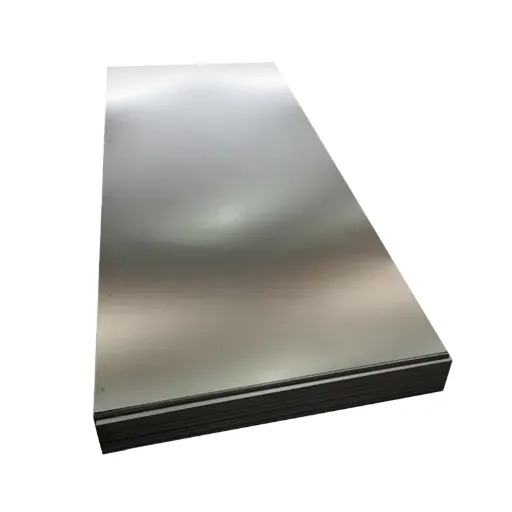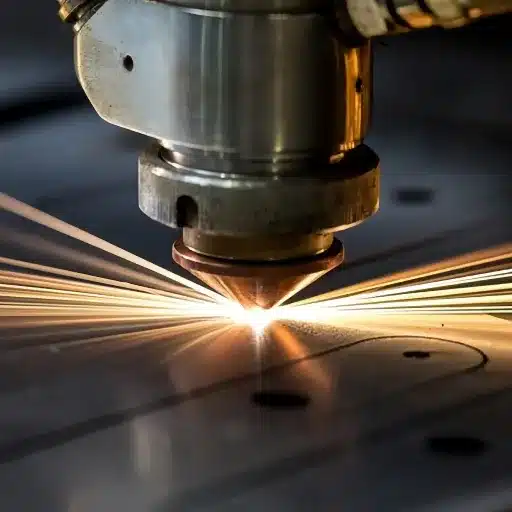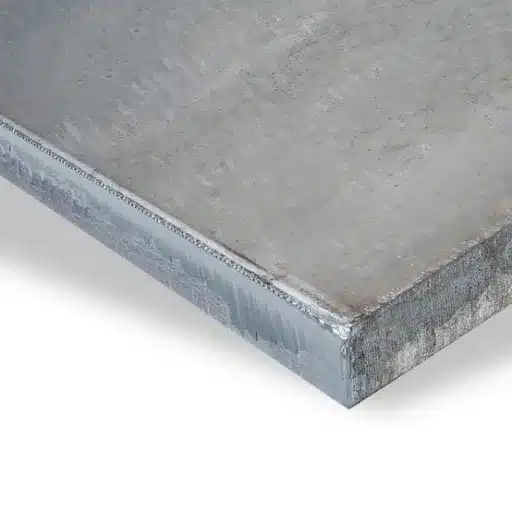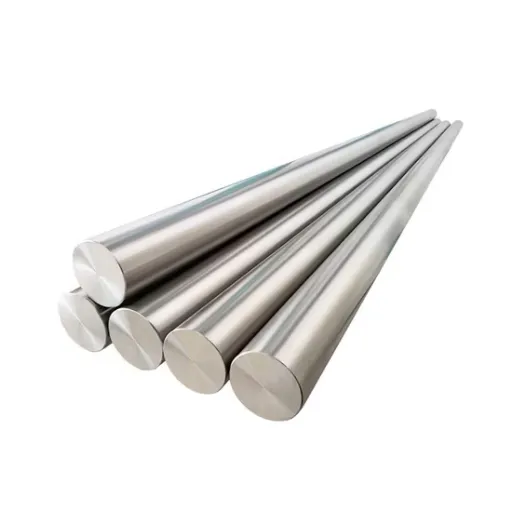A versatile high-tensile material, AISI 4140 alloy steel is one of the powerhouses for engineering and manufacturing today. This chromium molybdenum alloy is renowned for achieving high strength, toughness, and resistance to damage; hence, it has been embraced by numerous industries, from automotive to aerospace. However, what features give AISI 4140 an edge over most of its substitutes, and why? This blog post seeks to explain this, including its fantastic properties, uses, and processing methods.
Whether you are an experienced engineer, an eager manufacturer, or just want to know more about modern materials, this article provides helpful information about the advantages and potential of AISI 4140 alloy steel.
What is the Chemical Composition of AISI 4140?
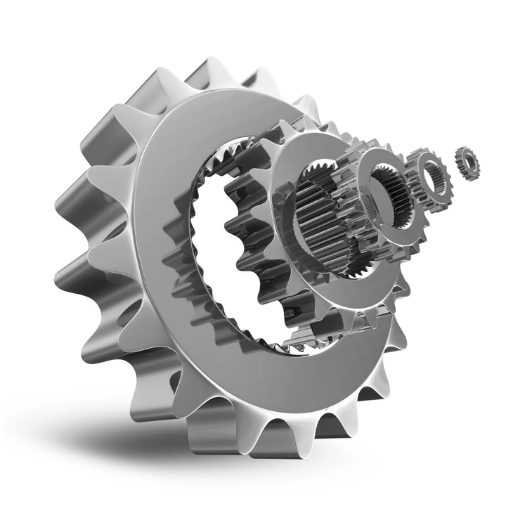
The AISI 4140 is mainly composed of the following elements:
- Carbon (C) <0.38-0.42%>
- Chromium (Cr) <0.80-1.00%>
- Manganese (Mn) emission <0.75-1.0%>
- Molybdenum (Mo) <0.15-0.25%>
- weight percent of silicon <0.1-0.3%>
- Iron* Remaining Balance
Suffice it to say that all of these components contribute to enhancing the mechanical properties of the material, such as strength, toughness, and wear resistance. This consequently means that AISI 4140 is used in demanding operations.
Understanding the Role of Chromium and Molybdenum
AISI 4140 is a low-alloy steel that requires chromium and molybdenum, which are important alloying elements for this steel. The importance of these elements is discussed and appreciated in respect to the material.
The function of the element chromium inside a steel matrix
There is also the ability of chromium to enhance the hardness; the chemical element chromium will also improve the resistance of the steel against corrosion, enhancing its strength further. This is done by forming stable carbides and a passivating oxide film, which helps with further wear and oxidation of the surface of the steel. It explains why AISI 4140 has chromium ranges of 0. to 0.80-1.10% for corrosion resistance and even structural damage without much erosion. Notably, the steel’s hardenability is improved by chromium, allowing for practical heat treatment objectives such as deep hardness without the arrival of softness, which, albeit low, is another difficulty in some components such as gears or shafts.
The Function of Molybdenum
Conversely, molybdenum is one of the strongest elements that fortifies steel’s chemical structure. Most advantages of 0.15-0.25% of molybdenum in AISI 4140 have not been mentioned. Substitute the cooling of robust structures when some components are exposed to thermal activity. Besides gratitude, mitigating the brittleness and improving tough textures also avoids or enhances the resistance to creep deformation when round stress is applied. From a corrosion perspective, since molybdenum adds to chromium for hardening and coating for better wear characteristics, this becomes a useful addition for AISI 4140 as it does not adversely affect turning.
Effects of Several Contents, Such as Chromium and Molybdenum in a Body
Thus, a more efficient mixture of chromium and molybdenum in AISI 4140 offers highly desired attributes suitable for a wide and functional spectrum of usage. As these elements enhance each other, they result in higher specific strength, superior fatigue performance, and very good performance characteristics under all kinds of cyclic loads.
Take, for example, a student of the present era pursuing metallurgy. Metallurgical advancement indicates that AISI 4140, which contains optimum percentages of Cr and Mo, would be best suited for the manufacture of automotive components (e.g., axles, and crankshafts), oil and gas in items such as drill collars and production casing, and dies and molds in tool making.
Recent metallurgical analyses depict that in Cr-Mo steels, processes such as quenching followed by tempering also help to improve the tensile strength to levels of 950 – 1150 MPa while offering elongation similar to that of welded structures about 12-15%.
The factors explain why AISI 4140 is still considered an ideal source material for designing parts with high power density, high supporting latherations, and reliability.
How Does Carbon Content Affect AISI 4140?
| Key Point | Details |
|---|---|
| Carbon Content Range | 0.38% to 0.43% |
| Hardness | Higher carbon increases hardness but reduces toughness. |
| Impact Toughness | Decreases as carbon content increases. |
| Tensile Strength | Higher carbon improves tensile strength. |
| Ductility | Reduced with higher carbon content. |
| Machinability | Lower carbon improves machinability. |
| Heat Treatment Response | Higher carbon enhances quenching and tempering results. |
| Applications | Suitable for gears, shafts, and high-strength components. |
| Weldability | Higher carbon reduces weldability. |
| Trade-offs | A balance is needed between strength and toughness for specific applications. |
Other Key Elements in AISI 4140
AISI 4140, in its composition, has various alloying elements that make it an exceptional type of steel in terms of properties. These elements are incorporated in specific proportions to achieve certain attributes this type of steel possesses, such as increased strength, hardness, wear, and also toughness. There are five elements identified within AISI 4140 whose salient roles are summarized below:
- Chromium (Cr)
The AISI 4140’s chromium content lies between 0.80% and 1.10%. Chromium increases the metal’s wear, hardness, and passivation. It also moderates the steel’s ability to retain strength when its temperature is increased.
- Molybdenum (Mo)
The minimum and maximum percentages of molybdenum in the alloy range between 0.15% and 0.25% respectively. Mollifies improve hardenability and toughness at high temperatures especially preventing creep and softening. Mollify also makes austenitic steels to exhibit high fatigue resistance.
- Carbon (C)
The carbon content of AISI 4140 is usually between 0.38% and 0.43% to achieve both hardness and ductility. A higher carbon content provides added strength and wear resistance of the steel, which can be optimally machined and welded with minimal carbon addition.
- Manganese (Mn)
The manganese content is generally between 0.75% and 1.00%. Manganese increases the tensile strength of steel and helps deoxidize it. In addition, Manganese supports hardenability and even gives equivalent results upon heat treatment.
- Silicon (Si)
On the other hand, this material, which ranges from 0.15% to 0.35%, imparts strength and toughness to the steel. It also reduces the steel’s oxidation and promotes its structural integrity during heat treatment.
When combined, these constituent elements form the very basic characteristic of AISI 4140, which is one of the applications one needs to compete in.
Exploring the Mechanical Properties of 4140 Alloy Steel

AISI 4140 steel is a high-strength low alloy (HSLA) that combines high strength and toughness with the ability to perform in myriad stresses. The principal properties of this material include:
- Tensile Strength—On average, around 95,000 up to 100,000 psi for an annealed condition, but it becomes higher in a heat-treated condition.
- Yield Strength – In the range of 60,000 up to 95,000 psi, with methods of treatment processes.
- Hardness—In its annealed state, the material typically ranges between 197 and 237 HB (Brinell Hardness) but can be more than 400 HB after heat treatment.
- Elongation – about or between 20% and 25% with a good capability to form.
- Impact Resistance—The material has a High energy absorption capacity, which means it is unlikely to break instantly in the event of a very high load.
These aspects make AISI 4140 alloy steel beneficial for use in industrial machinery, car parts, and daily hardware where high strength and resistant wear are necessary.
What is the Tensile Strength of AISI 4140?
In its annealed condition, the safe range for the tensile strength of said AISI 4140 alloy steel is approximately 850 MPa to 1000 MPa, but this can go beyond 1500 MPa after efficient heat treatment, subject to exact processing and tempering conditions.
Understanding Toughness and Ductility
Toughness refers to the property of a material by which it is clarified that it can bear energy absorption and cause deformation without any fracture. In contrast, the term ductility refers to the ability of a material to undergo deformation without any breakage under the effect of tensile force distributions. In my opinion, it seems that aisi 4140 alloy steels possess adequate toughness and ductility so that they could be employed in areas requiring the absorption of impact and critical mechanical loads.
How Does Fatigue Strength Compare?
| Parameter | Details |
|---|---|
| Fatigue Limit | Up to 597 MPa depending on treatment |
| Ultimate Tensile Strength | Ranges between 826 MPa to 1189 MPa |
| Residual Stress Effects | Improves fatigue limit; stabilizes stress layers |
| Austempering at 362°C | Highest crack growth resistance and strength |
| Shot Peening | Enhances surface compressive stress and fatigue |
| Multi-Austempering | Improves fatigue life with refined microstructures |
| Single Austempering at 312°C | High tensile strength, brittle microstructure |
| Compressive Residual Stress | Boosts fatigue limit by delaying crack growth |
| Microstructure | Bainitic-martensite mix improves strength/fatigue |
| Elongation (%) | Varies by treatment, lowest observed ~4.8% |
| Fracture Behavior | Enhanced ductile fracture with refined structures |
How Does Heat Treatment Impact AISI 4140?
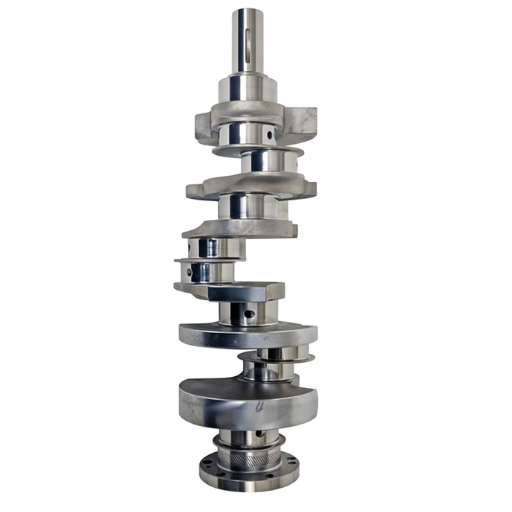
The mechanical properties of AISI 4140 steel are significantly enhanced or improved due to the grain structure changes by the heat treatment processes like hot rolling. Processes like quenching and tempering enhance the steel’s hardness, strength, and toughness properties, while nickel steels are to be annealed for better machinability and lower internal stresses. It is possible to increase the toughness of AISI 4140 without affecting the desired hardness level through an appropriate heat treatment regime. Therefore, it is applicable in industries such as automotive or aerospace.
What is the Process of Quenching and Tempering?
Quenching and tempering is a heat treatment process that consists of two stages, which improves the mechanical performance of materials, especially steel by enhancing its strength, hardness, and toughness. The Procedure steps begin from Step 1 which is referred as quenching in which the steel is firstly heated to its thermostability temperature; which is generally between 800 °C and 900 °C (1472 °F – 1652 °F) for aisi 4140 – and the heat is quickly dissipated to any medium such as water, oil or air. This swift cooling transforms steel into a martensitic microstructure, a hard and brittle constituent.
But, martensitic steel is brittle and cannot be employed for most applications, and this is where tempering is applied. As the name suggests, this step involves heating of the quenched steel back to below its critical temperature, usually within a range of 200 °C- 650 °C (392 °F- 1202 °F) as per requirement. This very heat treatment process helps remove the internal machined stresses, cuts down brittleness, and makes some of the martensite stable and therefore not as hard, by changing some part of it to a new tempered martensite phase.
The selection of quenching media and tempering temperature strongly influences the material’s characteristics. For instance, studies have demonstrated that after tempering AISI 4140 at about 500°C (932°F), one can obtain the best compromise between strength and toughness with ultimate tensile strength ranging between 850-1000 MPa and around 55-65 joules of impact energy in Charpy tests. These properties contribute to AISI 4140 being the most appropriate material for use in applications involving extreme loading, such as gears, shafts and bolts. The quenching and tempering methods must be used perfectly to give the steel enough capacity to work with the abovementioned conditions.
The Importance of Annealing in Alloy 4140
| Key Point | Details |
|---|---|
| Purpose | Softens steel for easier machining. |
| Process | Heat to high temperature, controlled cooling. |
| Improves Machinability | Reduces hardness, minimizes tool wear. |
| Enhances Uniformity | Eliminates internal stresses and imperfections. |
| Toughness Retention | Maintains strength while improving flexibility. |
| Applications | Ideal for gears, shafts, and heavy machinery parts. |
| Hardness Range | Typically 180-220 HB after annealing. |
| Corrosion Resistance | Can be improved with coatings. |
| Post-Annealing Treatments | Allows further heat treatment for added hardness. |
| Drawbacks | Time-intensive due to slow cooling process. |
Effects of Different Tempering Temperatures
Unsurprisingly, the tempering process has an underlying effect on the mechanical characteristics of AISI 4140 steel. In other words, it is possible to design custom hardness, strength and toughness of the material by its application by adjusting the tempering temperature. The following are the impacts of different tempering temperatures by focusing on five possible situations:
- 200°C (392°F)
- Hardness: Hard enough (50-55 HRC)
- Ultimate Tensile Strength: Approximates to 1300 MPa
- Toughness: Low due to excessive hardness
- Applications: Soft metals requiring wear resistance, such as punches and cutting tools.
- 300°C (572°F)
- Hardness: Slants towards the lower side (45-50 HRC)
- UTS: Attempts to achieve 1200 MPa
- Toughness: Better than after temp. 200°C
- Applications: Components that require a compromise between wear resistance and toughness are manufactured.
- 400°C (752°F)
- Hardness: Around the average hardness (35-40 HRC)
- UTS: In range of 1000 to 1100 MPa
- Toughness: Greatly enhanced and able to withstand shock and load conditions.
- Applications: Mainly utilized for the manufacture of machine tools and heavy gear.
- 500°C (932°F)
- Hardness: Decreased even more (28-32 HRC)
- UTS: Approximates to 900 MPa
- Toughness: Excellent, can tolerate impact loads
- Applications: Used for shafts, forgings, and other structural members.
- 600°C (1112°F)
- Hardness: Very low (20-25 HRC)
- UTS: Close to 700 MPa
- Toughness: Lacks nothing skewed towards the strength and toughness for an object that stretches like a rubber band
- Applications: Components such as pipelines and pressure vessels have low strength but very high toughness.
All in all, one can appropriately machine AISI 4140 steel components to comply with predetermined mechanical and operational parameters of different spheres of activity.
Investigating the Weldability and Machinability of 4140 Steel
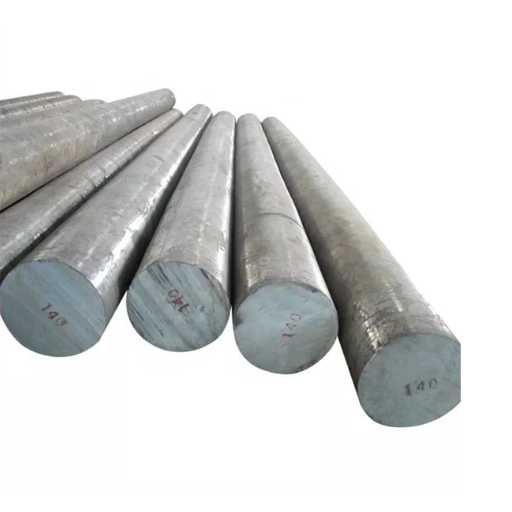
Weldability of 4140 Steel
AISI 4140 steel can be welded moderately well regarding its carbon and added alloy components. It is therefore advisable in most cases to preheat the workpiece and, afterwards, to apply post-weld heat treatment (PWHT) to reduce the tendency of the heat-affected zone (HAZ) to harden and crack. Low-hydrogen consumables and interpass temperature regulations also help to minimize weldment defects.
Machinability of 4140 Steel
AISI 4140 steel is relatively easy to machine. Its machinability is better in the annealed or normalized state. Proper tooling and cutting parameters, which may include low cutting speeds and the use of coolants, can further improve its machinability. Carbide tools may be required to work with hardened 4140 steel for efficient material removal.
Challenges in Welding AISI 4140
Welded joints in AISI 4140 plates are vulnerable to several problems associated with the elements of their chemical composition, as well as strength, and ability to be hardened at rates nearly equal to the total joint profile thickness. Due to an increase in carbon percentage to around 0.385- 0.43 J.H, the material fails due to thermal weld zones and crack-sensitive structures forming on the weld zone. Correctly heating or cooling a weld joint without the danger of embrittling the joint region around the weld has also hardening tendencies, which tend to be rather residual and may cause the weld to fail in use.
One of the serious problems one faces is the problem of hydrogen–induced cracking (HIC). Constituent elements in AISI 4140 steel would not allow for a great deal of hydrogen to be introduced when welding thick sections and using moist electrodes or inappropriate shielding gases, for example. Therefore, It is fundamental that low-hydrogen electrodes or those involving consumables with low hydrogen content and adequate drying prior to welding are ensured.
Equally important is the concern of minimising the extent of distortion. Due to the relative hardness of the steel, the expansion and contraction that takes place during the welding process elevate the amount of warping. The objective should be to consider the welding order and the possible clamping or fixturing to maintain the required dimensions. It was discovered, for instance, that preheating to about 250 °F or 400 °F and ensuring the interpass temperature does not exceed these values greatly assists in distortion and residual stress control.
Acquiring the desired mechanical properties without post-heating treatment is rather difficult. Research has shown that there can be a recovery of toughness after tempering or stress relief at temperatures of 1100°F to about 1250°F and the occurrence of brittle fracture is avoided
From the above, if the section being welded is large and comprises AISI 4140 or even if the welding is done on a thick plate, all the above difficulties are exacerbated as there will be even more heat dissipated in the base metal and the cooling rate can be the extent of any hardening that can be seen. One of the solutions for a certain number of difficulties that exist in this type of welding can be achieved by integrating correct ways of making multi-pass welding with necessary time pauses so that heat from the weld is redistributed, and also use appropriate welding techniques- automated TIG-welding, laser welding, and other technologically advanced techniques.
Best Practices for Machining 4140 Alloy Steel
| Parameter | Best Practice |
|---|---|
| Cutting Speed | 250-800 SFM, slower for hardened steel. |
| Feed Rate | 0.010-0.015 inches per revolution. |
| Depth of Cut | Roughing: 0.1-0.2 inches; Finishing: <0.03″. |
| Tooling Material | Carbide inserts preferred; C6 grade ideal. |
| Tool Geometry | Use sharp tools with positive rake angles. |
| Coolant Application | Flood cooling enhances tool life and finish. |
| Dry Machining | Feasible; use on lower speeds to reduce wear. |
| Chip Removal | Ensure efficient chip evacuation systems. |
| Surface Preparation | Avoid light first cuts, remove scale deeply. |
| Machine Setup | Secure workpiece; reduce vibration. |
What Are the Industrial Applications of AISI 4140?

Alloy steel AISI 4140 is in demand for various applications due to its strength, toughness, and wear resistance. It is often used as a material in the automotive industry for making crankshafts, gears, and drive shafts. It is also requested that hydraulic system parts, bolts, and fasteners be made in various sectors. AISI 4140 collars, drill and tool joints used in the oil and gas industry, help prevent the premature failure of the equipment. This ability to serve various functions allows it to be useful when components need optimum performance and exceptional entropy.
Why is it preferred in Shaft Manufacturing?
AISI 4140, without hesitation, is used in the manufacture of shafts because of its excellent mechanical properties, and in any way it is used. Here are the five key advantages of this steel:
- Having Strong Tensile Strength
ISO 4140 steel has a high tensile strength in the range of 655-980 MPa, which contributes to the high load-bearing capacity of components made from such steel without yielding or breaking.
- Possessing Good Toughness
Such steel alloy exhibits excellent toughness and in these cases is useful, for example, in transmissions in automotives or very heavy-duty equipment used in construction, and one can find the use of the shafts under impact or shock loadings.
- Does Not Get Worn Out or Abraded Easily
Welding, which can also be heat-treated, is commonly found on AISI 4140, which allows for exceptional abrasion resistance in certain regions. Heat-treated components in shafts do not decrease wear resistance even with endless rotating motions.
- Machinable Order and Weldable Shafts
AISI 4140 comes close but is sturdy and thick. Such property does not extinguish machineability or weldability with this one-way aft. On the contrary, they produce shafts with hexes or many different faces over the whole cross-section and meet other special engineering needs quite well.
- Capability to Operate at High Temperatures
Structural steel retains its properties despite being subjected to heat, making it ideal for units such as engines or industrial machinery where shafts are used. As a result, working temperatures rise significantly.
Such properties make AISI 4140 an efficient and effective component for constructing shafts in different spheres.
Use in Tool Steel Production
| Key Point | Details |
|---|---|
| Material Type | Low-alloy steel with chromium and molybdenum. |
| Tool Steel Classification | Not classified as traditional tool steel. |
| Applications in Tools | Used for dies, molds, and structural components. |
| Strengths | High fatigue strength, toughness, and wear resistance. |
| Heat Treatment | Can be hardened and tempered for tool applications. |
| Machinability | Good in annealed condition; suitable for precision tools. |
| Common Uses | Gears, shafts, and high-strength structural parts. |
| Limitations | Less wear-resistant than high-carbon tool steels. |
| Corrosion Resistance | Moderate; can be improved with coatings. |
| Versatility | Suitable for some tool applications but not a primary tool steel. |
Impact on Abrasion and Impact Resistance
Steel can be subjected to a scaffolding and impact performance assessment, with special attention on the microstructure and corresponding heat processing technique, such as preparation changes. For example, it is beneficial to raise the wear resistance by adding special elements, such as chromium, manganese, and molybdenum in the case of medium-carbon steels. These chemical components allow microscopic carbide phase precipitating, which essentially strengthens the structure and helps avoid surface scuffing. It is known that research conducted in recent years shows that moderate carbon steels of between 0.4 – 0.6 % of carbon content have high impact resistance and are very hard as well. They are said to be a general honeymoon steel for both wear-resistant and dynamic load applications.
Research illustrates that after quenched and tempered grades of the medium carbon steels, the material hardness attains levels of 45-55 HRC; however, this varies with different steel ratio grades of the composition and the tempering conditions. This hardness level is positively related to the wear resistance of these materials in terms of abrasives, especially those extensively used in machinery and tools such as cutlery. Apart from that, such steels are pretty tough so they can withstand some impact before cracking, which is essential for particular uses such as digging and other tool operations or industrial gears.
The carbon content of steel with fewer inclusions tends to be higher in ductility, but the lower the carbon content, the less the abrasion resistance because no carbides are formed. Although high-carbon tool steels are more rigid than medium-carbon steels, they are comparatively lower in impact resistance. Therefore, medium carbon steels provide an ideal balance of being adequate to both impact forces and abrasion resistance without compromising the result of being too brittle when harsh working conditions are imposed.
With improvements in coating systems such as PVD (Physical Vapor Deposition) and nitriding processes, medium carbon steels become even more resistant to wear and impact, which are the most critical properties for tools. According to recent industry reports, coating such a substrate increases its wear life by about 40 %. This makes these steels more appropriate for engineers or mold makers.
References
- Characterization of AISI 4140 borided steels – Published on ScienceDirect, this study evaluates the surface characteristics of borided AISI 4140 steels.
- Erosion of AISI 4140 steel – This article investigates the erosion behavior of AISI 4140 steel under various heat treatment conditions.
- An investigation on the microstructure and mechanical properties of direct-quenched and tempered AISI 4140 steel – A detailed study on the microstructure and mechanical properties of AISI 4140 steel.
Frequently Asked Questions (FAQ)
Q: What are the main physical properties of AISI 4140 Alloy Steel?
A: AISI 4140 Alloy Steel is known for its excellent tensile strength and toughness. It exhibits high fatigue strength, wear resistance, and torsional strength. These physical properties make it an excellent material choice for demanding applications.
Q: How do the thermal properties of AISI 4140 Alloy Steel affect its performance?
A: The thermal properties of AISI 4140 Alloy Steel include the capacity to maintain strength at elevated temperatures. It can be heat-treated and normalized by heating to 1675°F and then tempered at lower temperatures, such as 600°F, to achieve the desired hardness and strength.
Q: What is the significance of the UNS G41400 designation for AISI 4140 Alloy Steel?
A: UNS G41400 is the Unified Numbering System designation for AISI 4140 Alloy Steel. It helps standardize and identify the steel grade across different suppliers and applications, ensuring consistency in specifications.
Q: How is AISI 4140 Alloy Steel hardened?
A: AISI 4140 Alloy Steel can be hardened through heat-treatment processes. It is typically quenched and tempered to enhance its hardness and strength. This process involves heating the steel to a high temperature, rapidly cooling it, and then tempering to reduce brittleness.
Q: What are the standard shapes and sizes for AISI Alloy 4140 Steel Bar?
A: AISI Alloy 4140 Steel Bars are available in a variety of shapes and sizes, including rounds, squares, and flats. Depending on the required specifications and application needs, they can be hot rolled or cold drawn.
Q: Why is AISI 4140 Alloy Steel considered a “chromoly” steel?
A: AISI 4140 Alloy Steel is often referred to as “chromoly” due to its chromium (Cr) and molybdenum (Mo) content. These elements enhance the steel’s strength, toughness, and wear resistance, making it suitable for high-stress applications.
Q: What are the benefits of using AISI 4140 Tool Steel in manufacturing?
A: AISI 4140 Tool Steel offers high fatigue strength and excellent wear resistance. It is ideal for manufacturing tools and components that require durability and strength, such as crankshafts and other automotive parts.
Q: How does the annealed condition affect AISI 4140 Steel?
A: In the annealed condition, AISI 4140 Steel is softer and more workable, which makes it easier to machine. However, it will not have the same hardness and strength as when it is in the quenched and tempered condition.
Q: What is the role of manganese in AISI 4140 Alloy Steel?
A: Manganese in AISI 4140 Alloy Steel acts as a deoxidizer, enhancing the steel’s strength and hardness. It also improves wear resistance and the ability to be heat-treated effectively, contributing to the steel’s overall performance.


